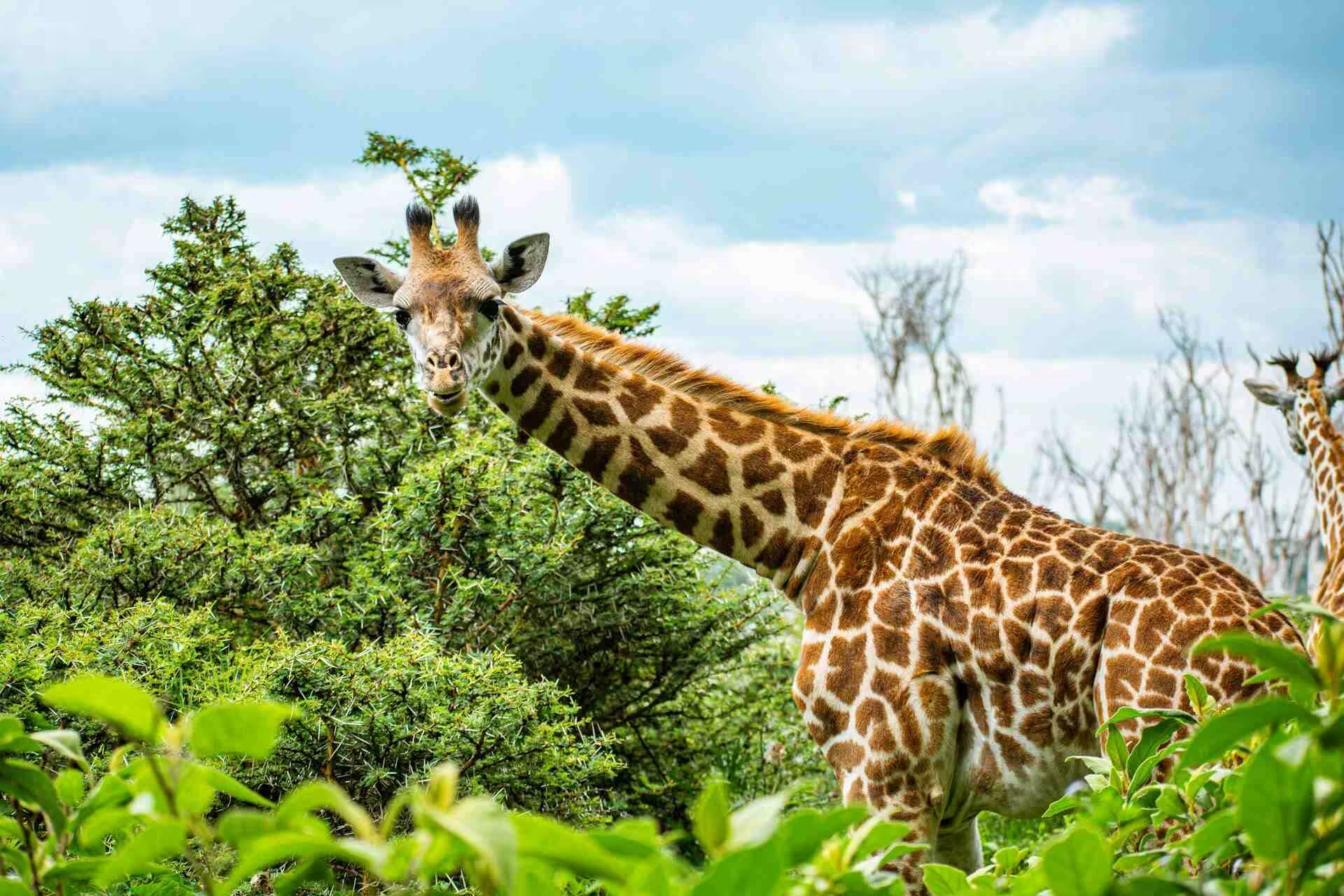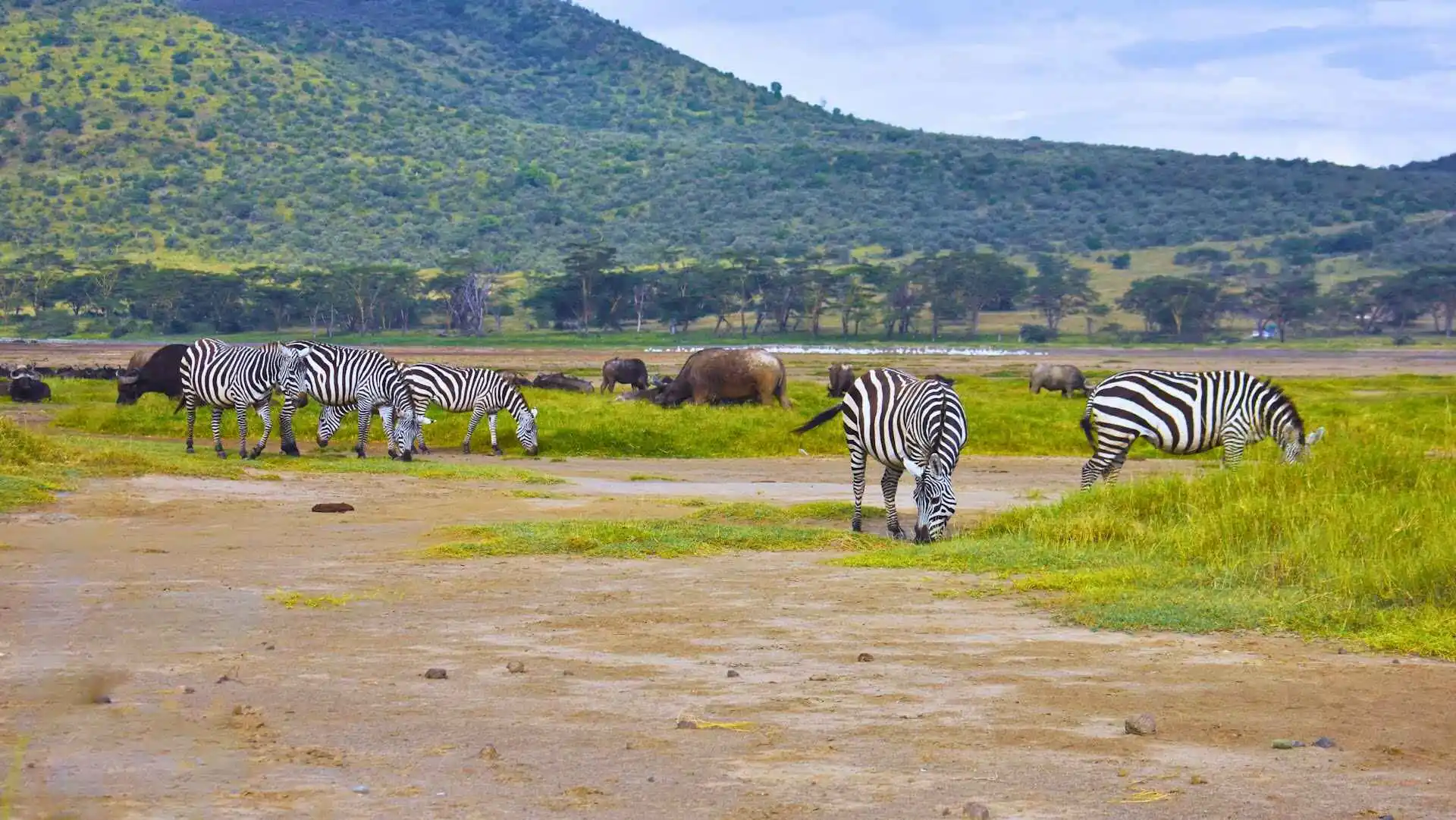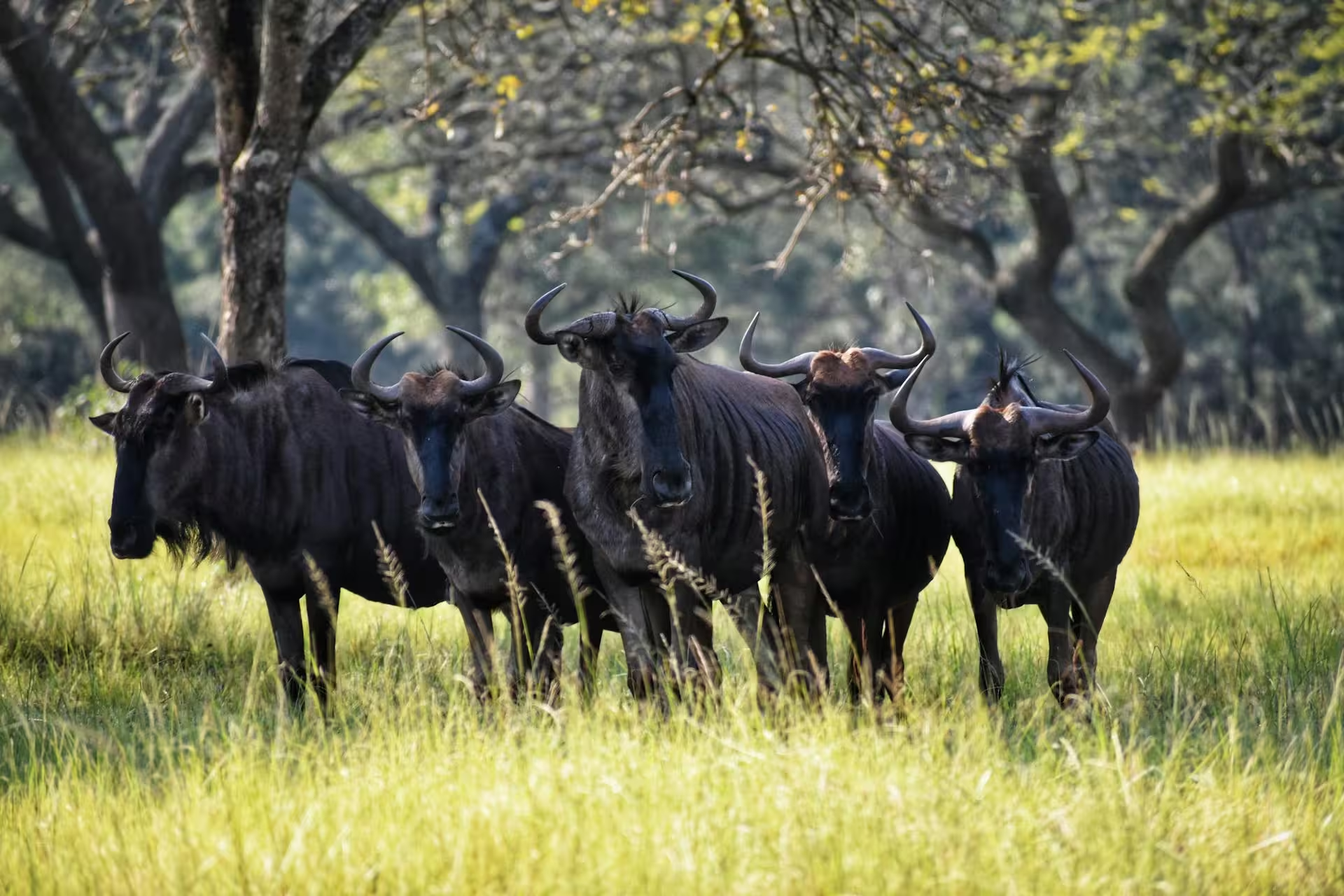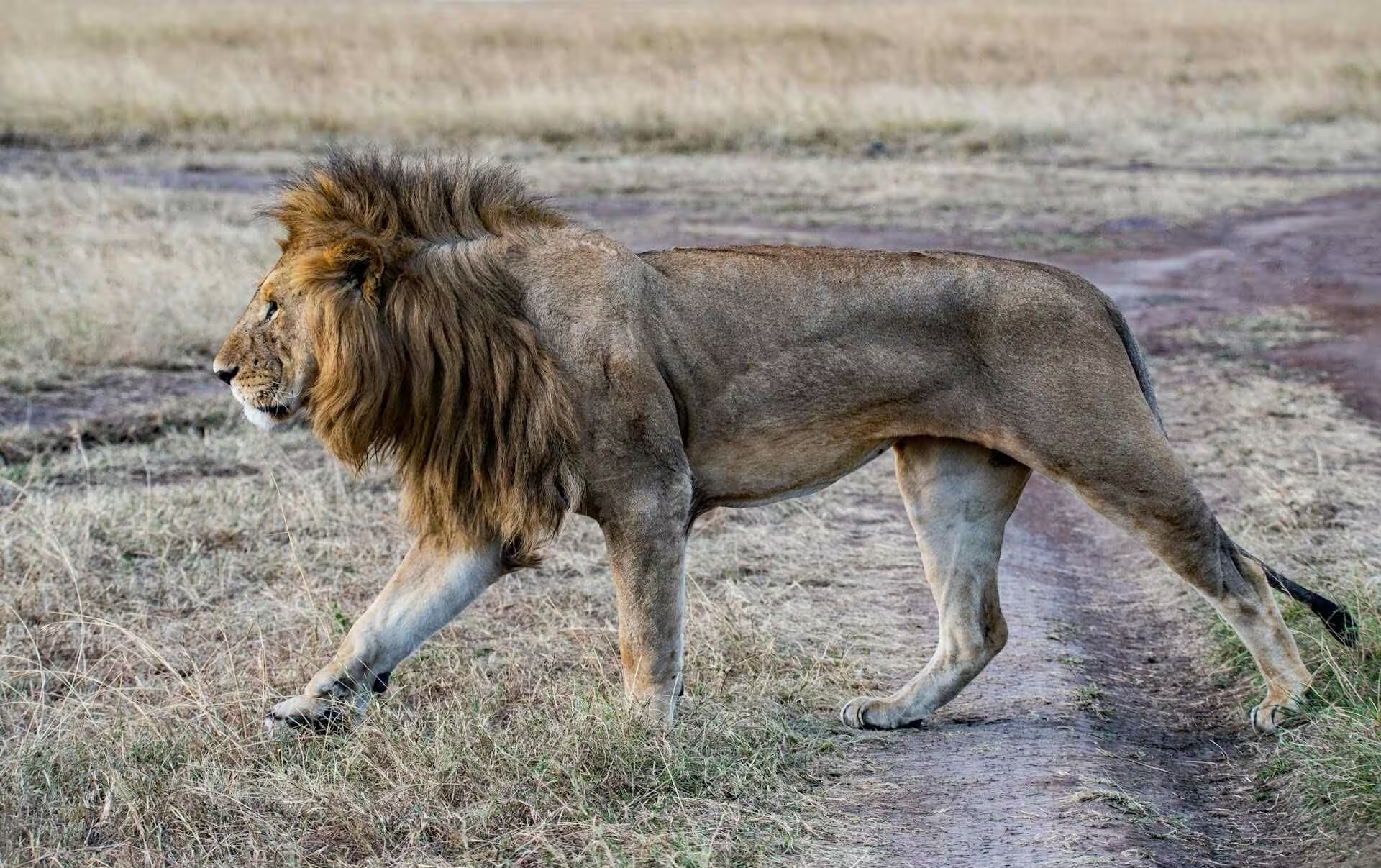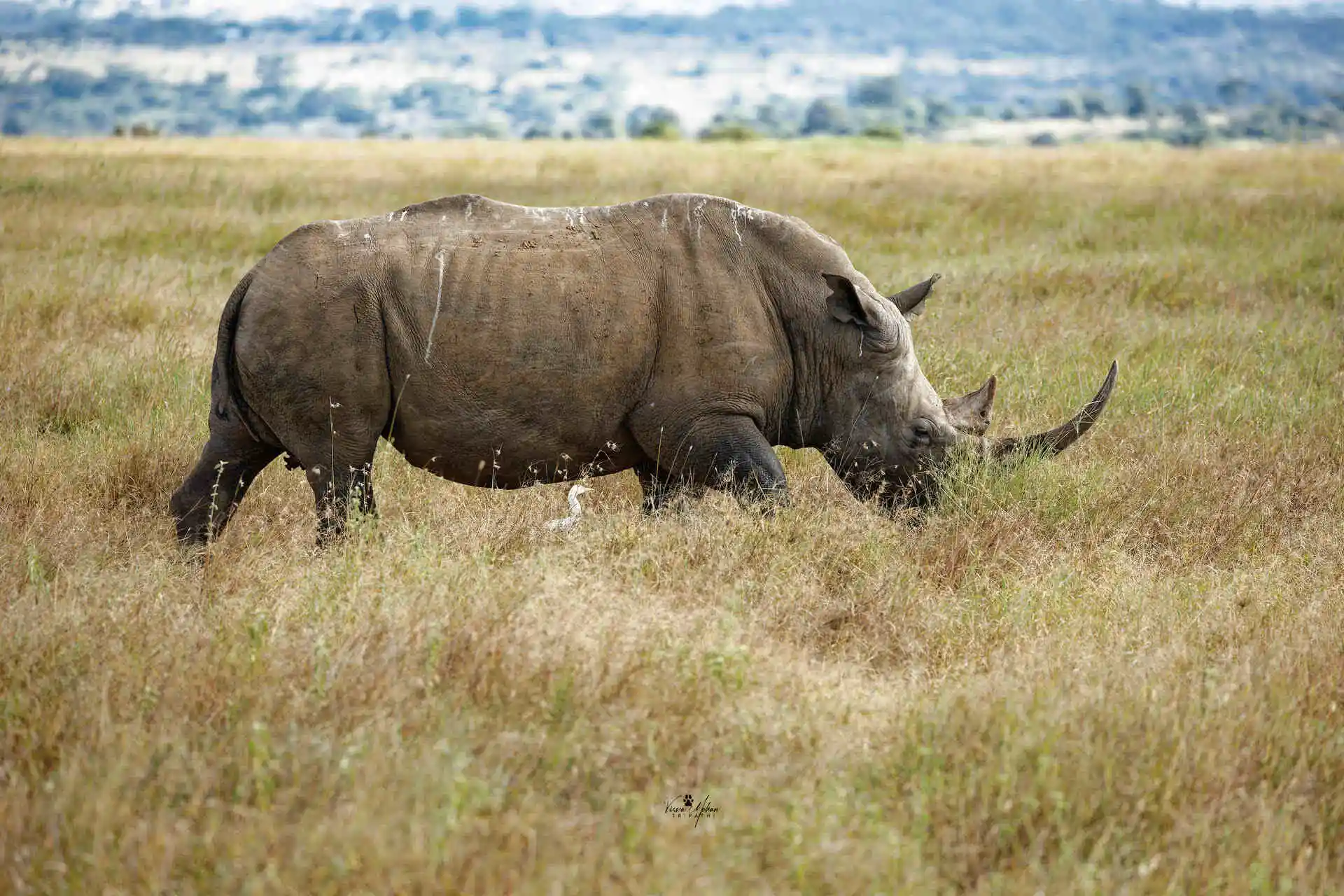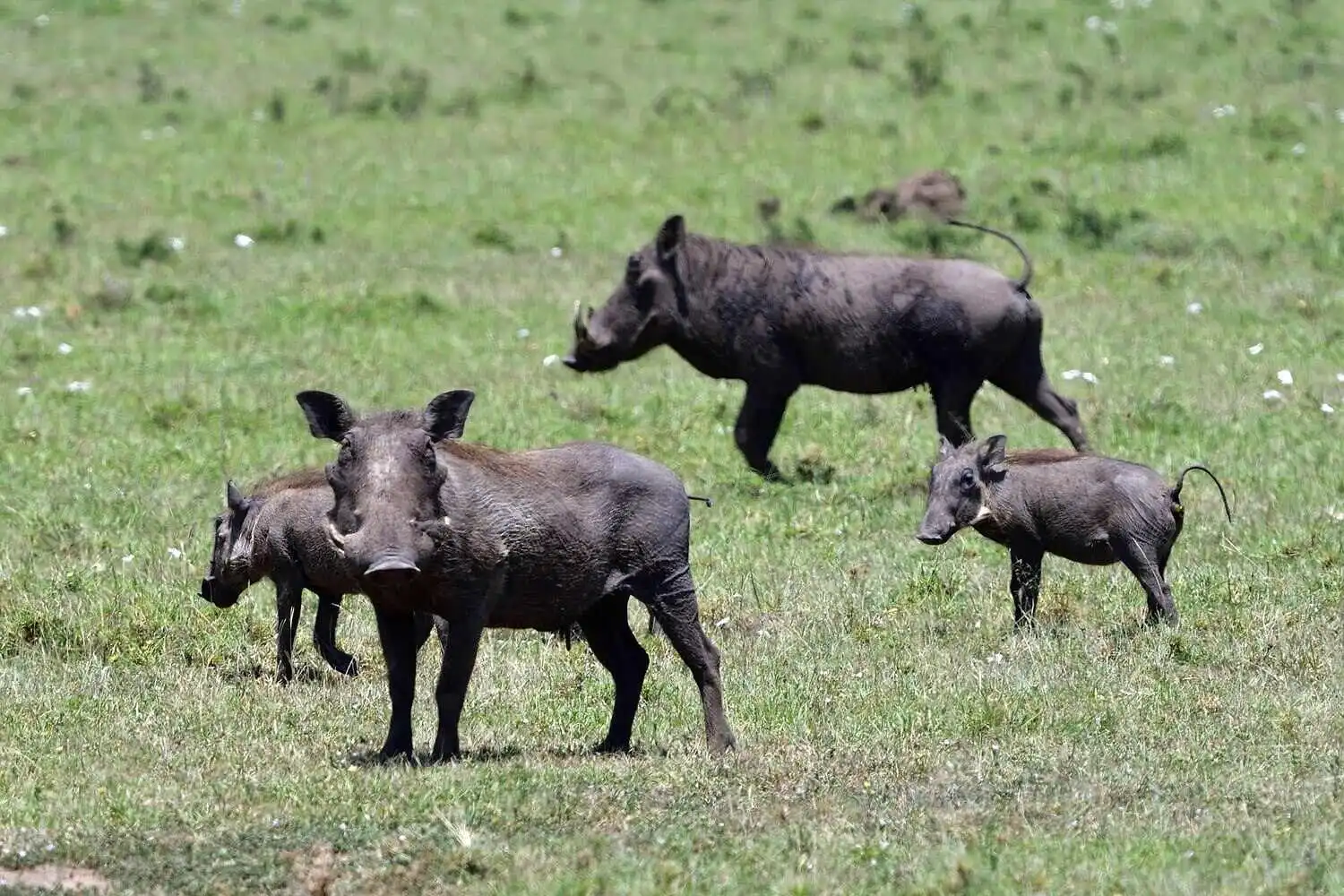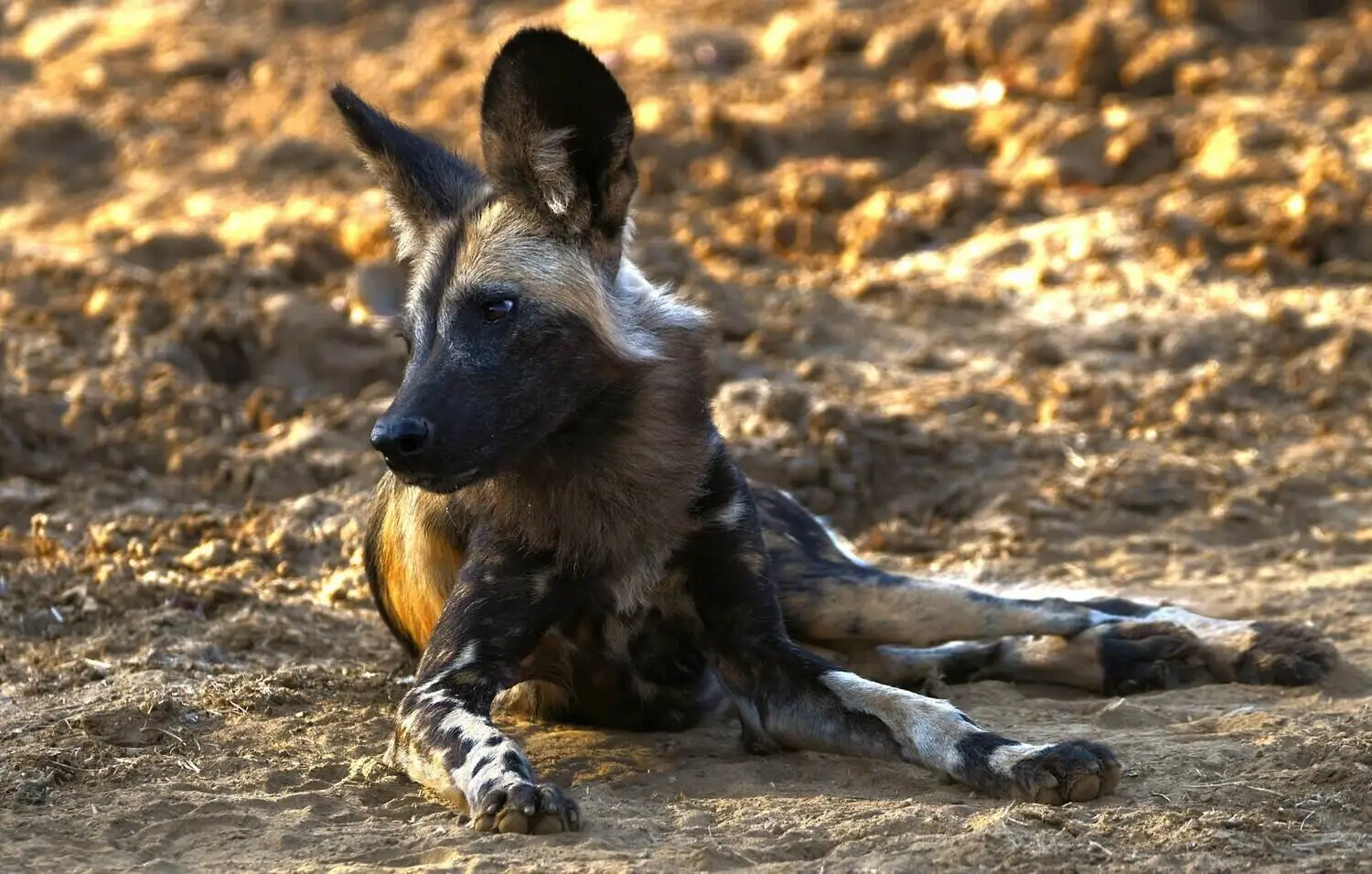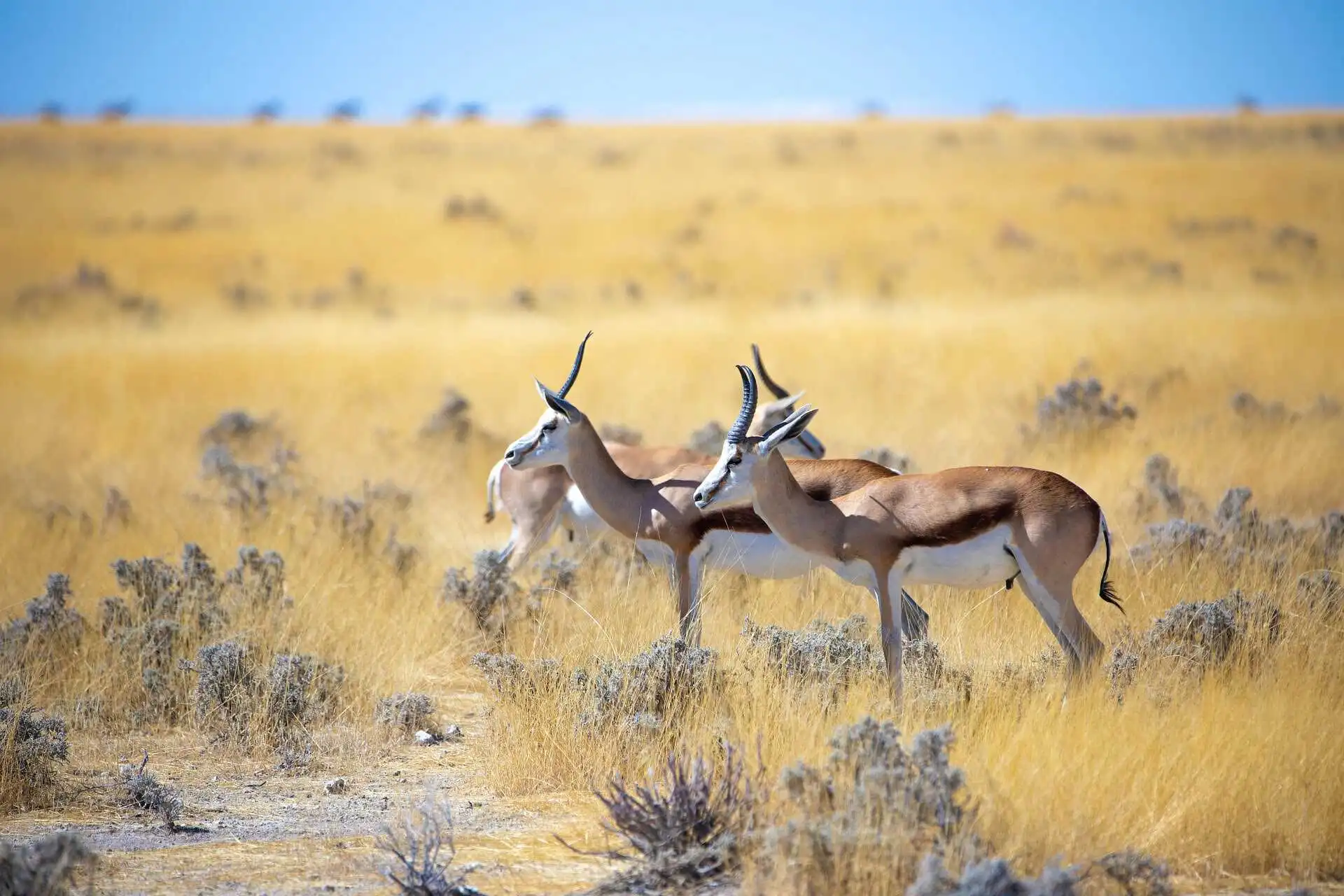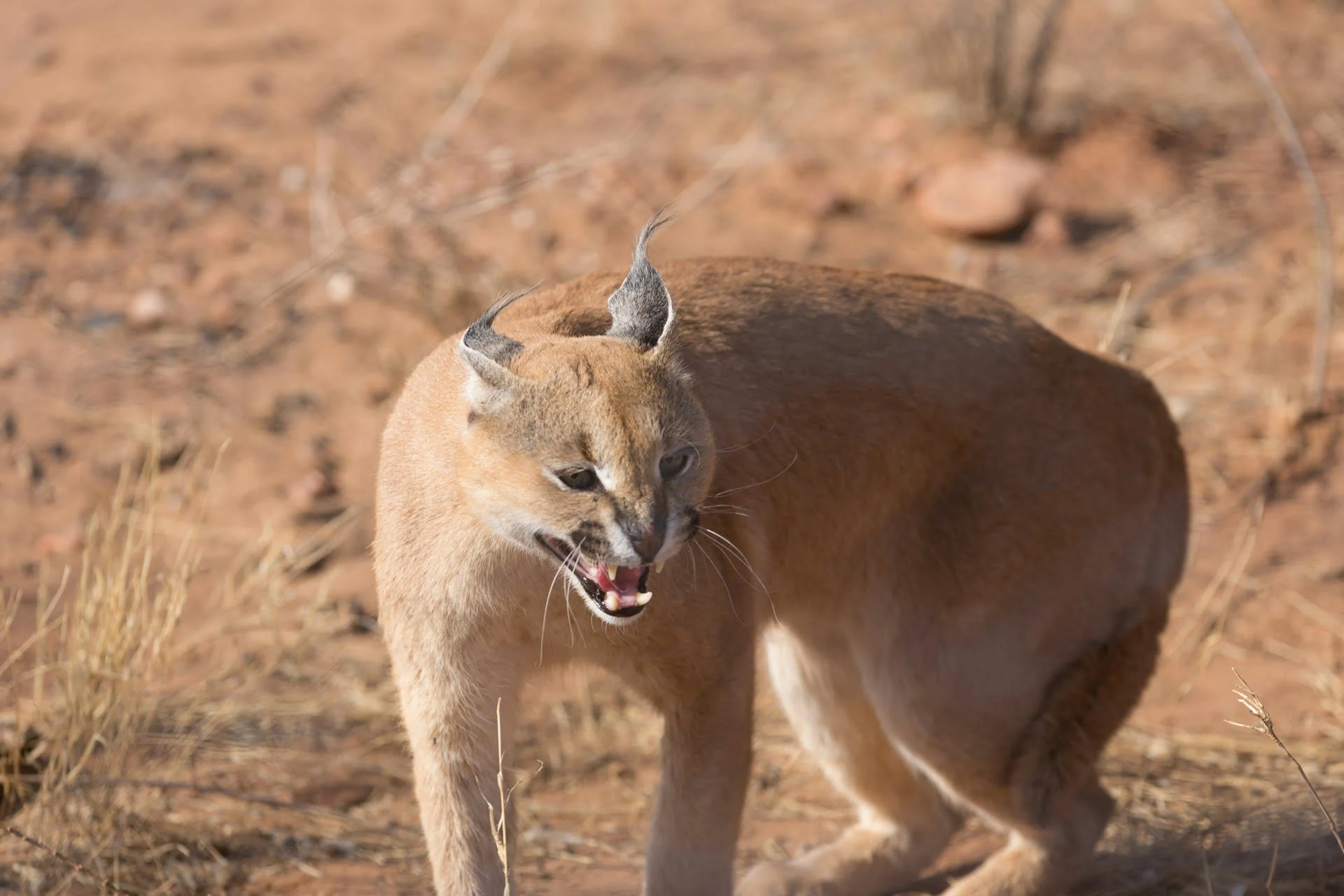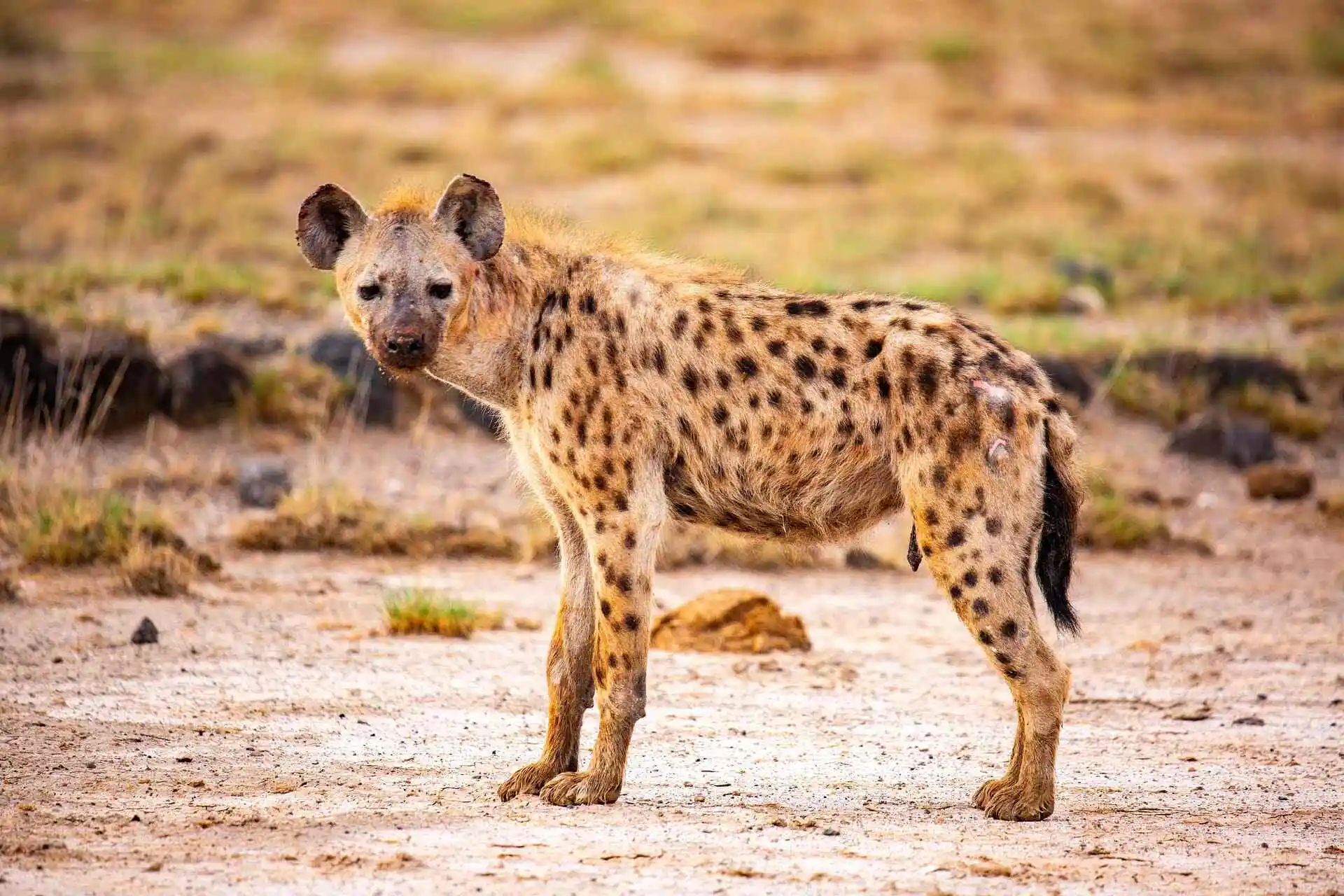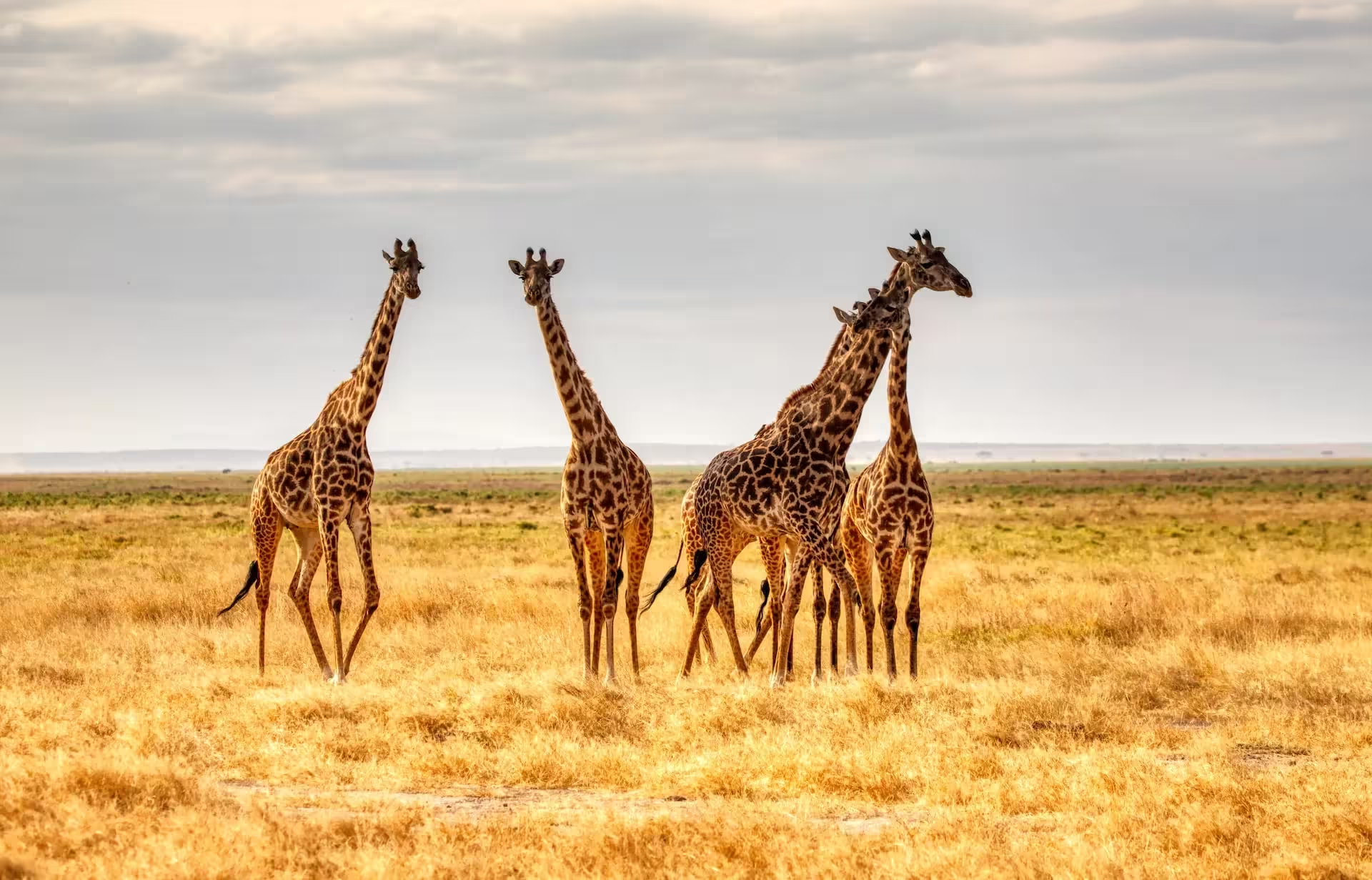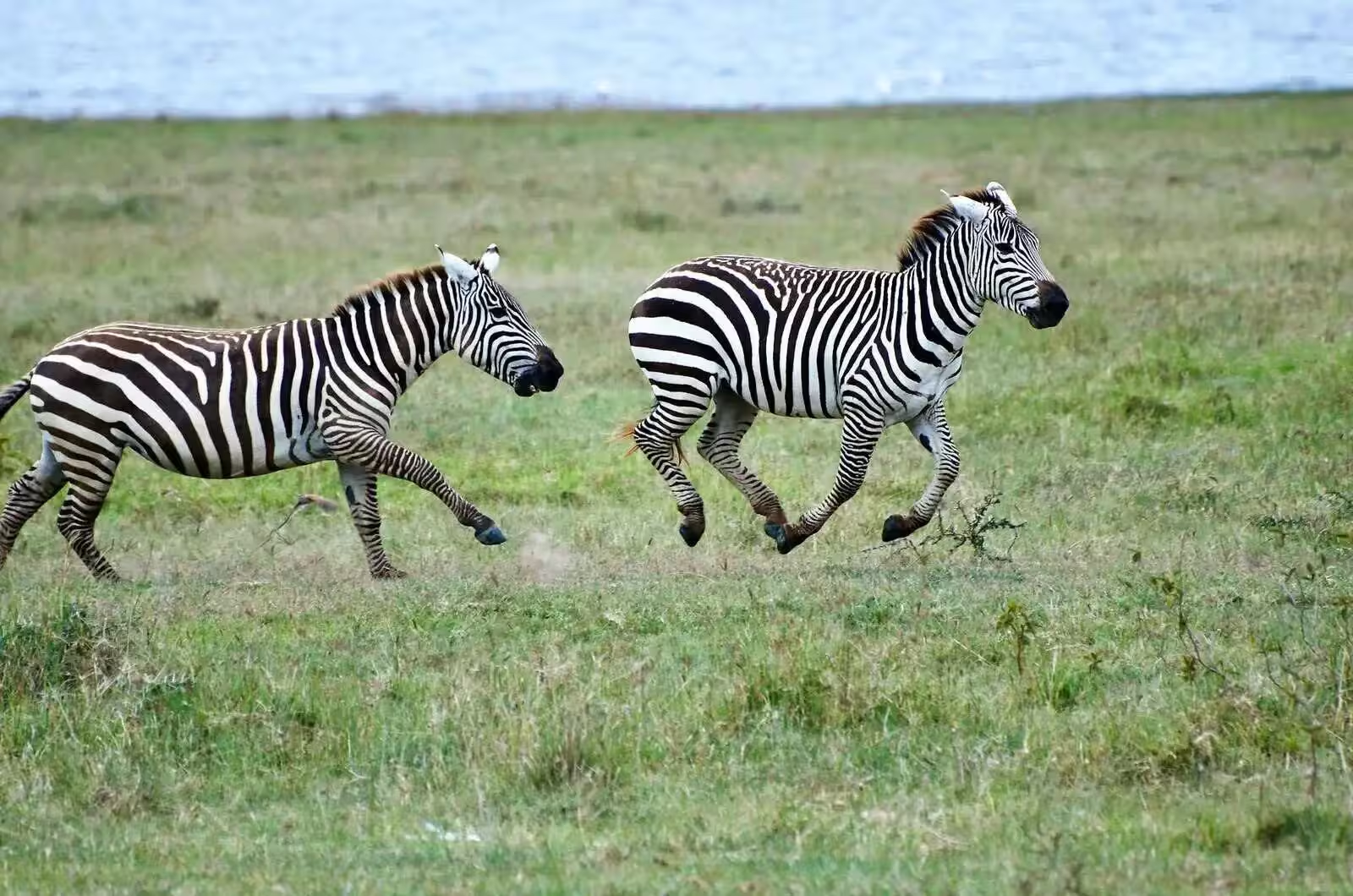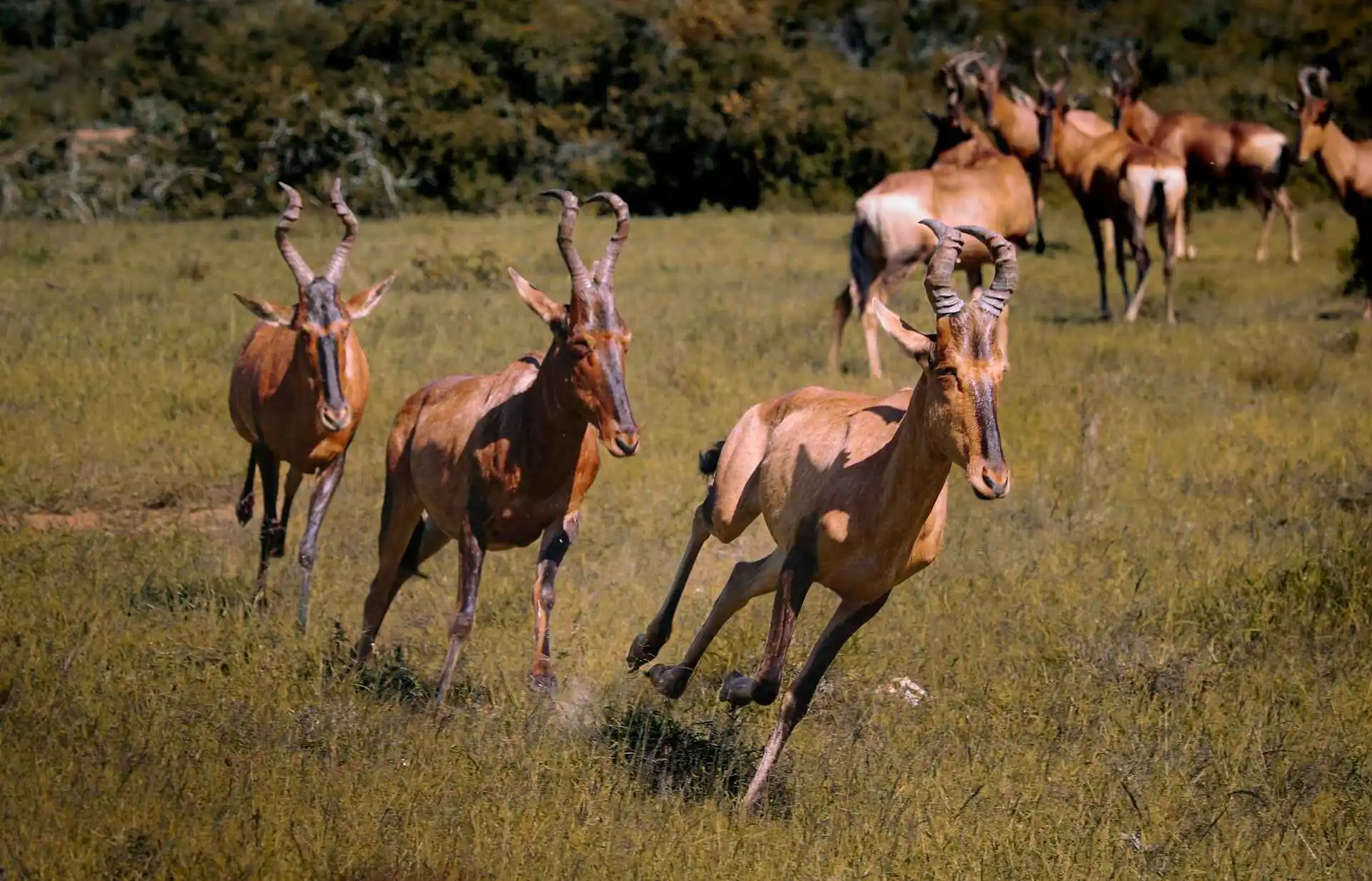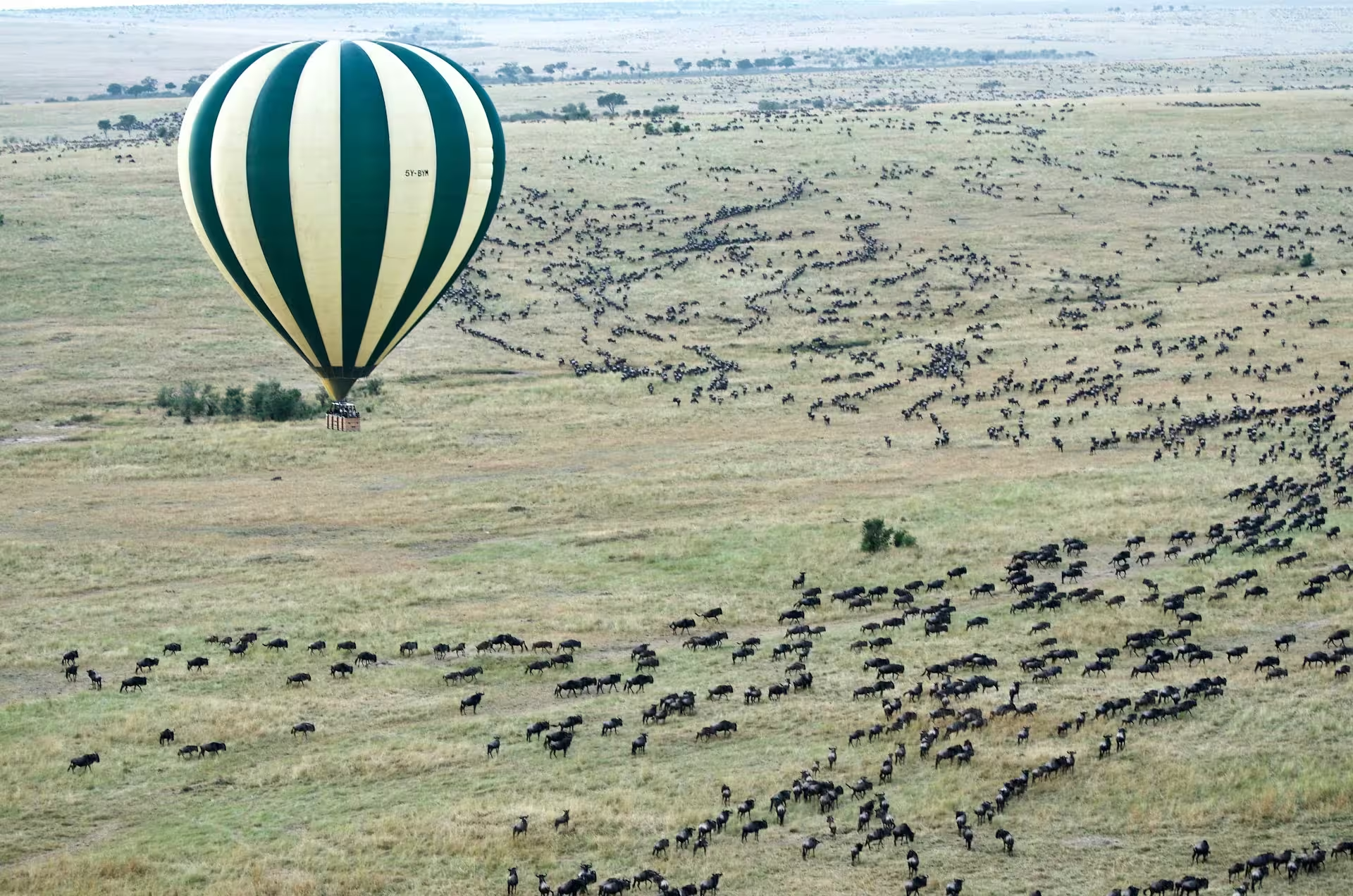What Does a Hippopotamus Look Like?
The hippopotamus is one of the most iconic and powerful animals in Africa. It has a bulky, barrel-shaped body with short, sturdy legs and an enormous mouth. Adult males, known as bulls can weigh up to 4,000 kg. While females are slightly smaller. Despite their size, hippos can move quickly and can run up to 30 km/h on land over short distances.
Hippos have nearly hairless skin that ranges from dark grey to brownish-pink. Their skin is extremely sensitive to sunburn and dehydration, which is why they spend much of their day submerged in water. To help protect themselves, hippos secrete a reddish, oily fluid, often called blood sweat. This substance acts as both a natural sunscreen and antibacterial shield.
Their wide mouths can open up to 150 degrees, revealing massive jaws and tusk-like canine teeth that can grow over 50 cm long. While they are herbivores, these teeth are used for fighting, especially among territorial males.
Positioned high on the head, the hippo’s eyes, ears, and nostrils allow it to stay mostly submerged while still seeing, hearing, and breathing. Best for its semi-aquatic lifestyle. Hippos can sleep underwater. They automatically rise to the surface for air without waking up.
Quick Facts Table
| Characteristics | Description |
|---|---|
| Scientific Name | Hippopotamus amphibius (Common Hippopotamus) |
| Conservation Status | Vulnerable (IUCN Red List) |
| Habitat | Rivers, lakes, swamps, and wetlands across Sub-Saharan Africa, with nearby grasslands for grazing. |
| Diet | Primarily herbivorous (grazer); mainly eats short grasses at night. |
| Average Weight | Males: 1,500 - 3,200 kg (3,300 - 7,050 lbs) Females: 1,300 - 2,500 kg (2,870 - 5,500 lbs) |
| Average Length | 3.3 - 5.2 meters (10.8 - 17 feet) |
| Average Height | 1.5 - 1.65 meters (5 - 5.4 feet) at the shoulder |
| Lifespan | Wild: 40 - 50 years Captivity: Up to 60 years |
| Social Behavior | Live in groups ("pods" or "bloats") in water; males often solitary on land. |
| Activity Pattern | Semi-aquatic: Days in water, nights grazing on land. |
| Speed | up to 30 km/h |
What Do Hippos Eat?
Though hippos live in rivers and lakes, they do not eat aquatic vegetation. They are strict grazers, primarily feeding on short grasses found near water. Each night, they leave the safety of the water to graze while traveling up to 8 kilometres and consuming as much as 40 kg of grass.
During the dry season or when food is scarce, hippos have been known to eat leaves, fruits, and even reeds. However, they avoid tough plants or shrubs. Their digestive system is uniquely adapted to ferment plant matter, breaking it down slowly to absorb nutrients efficiently.
Hippos follow the same feeding paths night after night, creating well-worn hippo trails that other animals use too.
While some isolated incidents of scavenging have been reported during extreme drought, hippos are not carnivores and do not hunt or eat meat under normal conditions.

Where Do Hippos Live?
Hippos live in freshwater habitats like slow-moving rivers, lakes, and swamps across sub-Saharan Africa. They spend most of their day in the water to stay cool and protect their sensitive skin. Some of their favorite spots include the Nile River in East Africa, the Zambezi River in Zambia and Zimbabwe, and the Okavango Delta in Botswana.
Top Countries with Hippo Populations
Hippos are common in several African countries where large rivers and wetlands are found. Some of the best places to see them include:
- Kenya – along the Mara and Tana Rivers
- Tanzania – especially in the Selous Game Reserve and along the Rufiji River
- Uganda – in areas like the Kazinga Channel in Queen Elizabeth National Park
- Zambia – along the Luangwa and Zambezi Rivers
- Botswana – especially in the Okavango Delta and Chobe River areas
These regions provide plenty of water and grasslands, which hippos need to thrive.
How Hippos Handle the Dry Season
In the dry season, many rivers shrink and water becomes limited. When this happens, hippos gather in deeper pools where water still remains. These spaces can get crowded, making the hippos more aggressive, especially around younger calves.
At night, they travel longer distances on land in search of fresh grass. Even in tough times, hippos manage to adapt. They stay close to any water source and keep their routines of soaking during the day and grazing at night.
Cultural Significance of the Hippopotamus
Historical Importance
In Ancient Egypt, hippos had dual roles in mythology. The destructive male hippo was associated with Set, the god of chaos and storms. Yet, the female hippo was revered and linked to Taweret, the protective goddess of childbirth and fertility.
Because of their strength and unpredictability, hippos often appeared in African myths as symbols of power, unpredictability, and wild nature. Some communities even considered them spirit animals or guardians of rivers and sacred water bodies.
Symbolic Role in Modern Africa
Today, the hippopotamus represents resilience, natural heritage, and the fragile balance of ecosystems. It’s an emblem of how water connects life across the continent. As human development and droughts threaten wetlands, protecting hippos means protecting water ecosystems that serve countless other species.
Ecological Importance
Hippos aren’t just massive river dwellers—they are key ecological players. Here’s how they help nature thrive:
Nutrient Cycling
Hippos graze on land and release waste into the water. This might sound unpleasant, but their dung fertilizes river ecosystems, feeding algae, fish, and aquatic insects. In fact, in some African rivers, hippo waste is a major part of the aquatic food web.
Habitat Creation
By trampling vegetation and creating trails, hippos maintain wetland landscapes. These paths are used by other animals, while their wallows become microhabitats for frogs, birds, and fish.
Water Quality Support
Though too much hippo dung can reduce oxygen levels, in balanced numbers, their presence supports oxygen circulation and nutrient mixing. Scientists have even found that hippos help cycle silica, an element vital for aquatic plant life, particularly diatoms, a group of algae crucial to many food webs.
Fun facts about Hippopotamus
- Third-largest land mammal on Earth, after the elephant and white rhinoceros.
- Their tusk-like teeth can pierce metal boats, which is why they are feared by river navigators in Africa.
- Hippos can hold their breath underwater for 5 to 7 minutes on average.
- Hippos make loud vocalizations both above and below water, including grunts, bellows, and wheezes. These sounds can travel through the water and be heard from miles away.
- They live in groups called pods, bloats, or herds, often consisting of 10–30 individuals, though some pods can reach up to 100.
Hippos have been observed clearing debris with sticks and possibly using objects to access food, suggesting signs of problem-solving behaviour in the wild.
Best Places to See Hippos in the Wild
If spotting a hippo is high on your safari wish list, there are a few places where sightings are almost guaranteed. These locations have plenty of water and healthy hippo populations.
- Masai Mara & Lake Naivasha, Kenya: Lake Naivasha is one of the best spots in Kenya to see hippos up close during a boat ride. The Masai Mara also has hippos in its rivers, especially around the Mara River crossings.
- Luangwa River, Zambia: This river is packed with hippos. Whether you’re on a walking safari or game drive in South Luangwa National Park, you’ll often hear their grunts before you see them lounging in the water.
- Chobe River, Botswana: Hippos are very common along the Chobe River. Boat safaris here offer great chances to watch them swim, feed, and interact in groups during the day.
- Kazinga Channel, Uganda: This natural waterway between Lake Edward and Lake George is home to one of the largest hippo populations in Africa. A boat cruise on the channel almost always brings you face to face with these massive animals.
These rivers and lakes offer not just amazing hippo sightings but also beautiful landscapes and a variety of other wildlife.

